Welcome back to Cubers Anonymous…kind of. Today we’re in for something a little different. It’ll still be Cube related; there isn’t any doubt about that. But I want to take a couple of articles to fill you guys in on something that me and my best bro Ali Aintrazi have been working on for the better part of the last year: the Custom Cube Project.
For those of you that haven’t been following our weekly updates on the Facebook page or read the article we published a few months back, let me bring you up to speed. Ali and I have been building a cube made up almost entirely of new cards, designed and developed from start to finish. It has been the single most difficult project I’ve done, as well as the most rewarding, and I’m sure I speak for Ali too when I say that. We’ve probably spent close to 1000 hours combined on this thing—but I’m getting ahead of myself. Let’s start at the beginning!
We’ve Created a Monster
You can check out the introduction article in the link above for the origin story, but today I want to jump right into the good stuff. So how did we go about putting this thing together?
When we got back home and in front of our respective computers, I started to crunch number of other regular cubes, around twelve in total. What was the percentage of creatures in each cube? Artifacts? Instants? What about per color? What about multicolored? You get the idea. Even getting started was a process in itself. We housed all the info in (at worst) a top ten invention of the Internet, the majestic Google Docs spreadsheet. We decided that the cube would consist of 360 cards, just enough for an eight-man draft—and using every single card.
This accomplished a few things; the first being reducing the degree of difficulty that making the cube would be. Ultimately, it didn’t make it much easier, but it let our best ideas rise to the top. Secondly, a smaller cube would allow for a deeper commitment to identity forming between the colors and color combinations and clearer paths during drafts. Lastly, it cut down on the learning curve that would take place for new drafters of the cube—which is every single person at least once.
Of course all the while we were making cards, knowing that no matter how many cards we decided on or what direction we would take each color in, there were plenty of cards to be made. It took us about .02 seconds to realize that we needed something more than our card-creating brains to get this done; we needed things that already existed. We’d be foolish to think that we could create cards in full more ideal than ones like Lightning Bolt, Counterspell, or Oblivion Ring. There was already a rich history of basically perfect cards for what we needed, so why should we shy away from perfection? We shouldn’t!
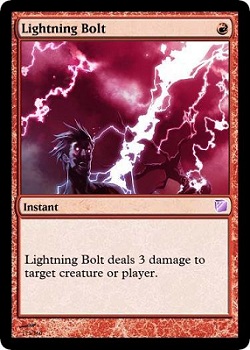
When we needed a single W removal spell, we grabbed Swords to Plowshares. When we needed sweet mana fixing, we grabbed both the Alpha dual land cycle and the Onslaught/Zendikar fetchland cycle. When we needed a red three-mana enchantment that quickly decimated your opponent without giving them a sliver of hope, we grabbed—anyway, we used what we needed when we felt that that exact effect at that exact cost was where we wanted to be. All in all, we ended up with exactly fifty cards that are real Magic cards, which we refer to as “reprints” to easily identify them. Fifty wasn’t a number we picked; we just used what we needed, and that happened to be exactly fifty cards.
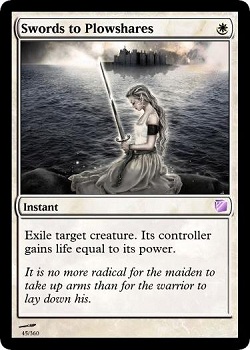
Nobody Wants to See Chaff Anymore: They Want Power
The other 310 cards took a bit more work. We knew 100% that we had to have both even color balance and equal number of two-color lands. Even though we didn’t necessarily have to conform to cubing norms here, we were deciding exactly what each color was doing, so there wasn’t a need to be more radical than we were already being. I don’t want to scare you when I say that we were deciding what each color was doing, I only mean that we could include (or in some cases, exclude) part of that color’s identity. The color pie was/is grossly important to the CCP, and each color is certainly defined by what it can’t do rather than what it can. Red and black can’t interact with enchantments; blue can’t touch lands; etc. Nothing is too far off the beaten path, but we did reach into each of the color’s narrowest part of the pie to get what we wanted out of it. For example:
Green cares a little more about the graveyard than what shows up in normal Magic. We’ve utilized the full life cycle that green cares so deeply about, and that involves getting use out of the graveyard and sacrificing more things. This is not only flavorful as the birth-to-death maxim, but highly functional as moving cards from one zone to another quickly tends to be very powerful. This also gave green a bit in common with black, which is a dramatically better pair in the CCP than real Magic.
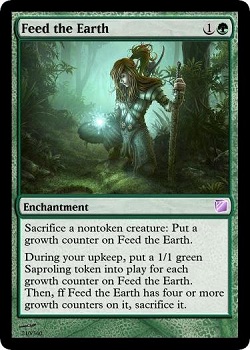
Red is more concerned with vicious duality, meaning it doesn’t mind wildly spending its resources just as long as it can take out some of yours.
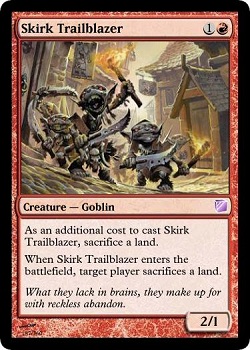
Black is able to do just about anything it wants at a cost, but the cost isn’t always the cliche “life payment.” Black has a very strong aggressive theme in the CCP, but it comes at the cost of not being able to block very well at all. We have several aggressive creatures with shadow, and a couple that don’t must attack anyway. Throw away what you know about little black creatures; this isn’t WotC’s black aggro!
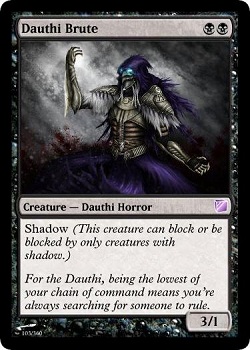
White is very concerned with enchantments and artifacts, more so than any other color.
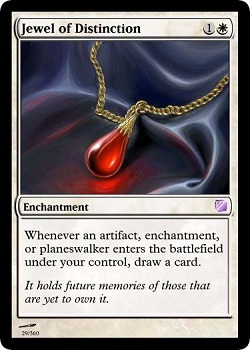
Blue has a lot of trouble closing the game in a traditional way. This isn’t really out of the normal color pie for blue, as most Standard environments have that covered. In traditional Cube, we’re able to see all the best blue finishers ever—which turns out to be quite a few over the years. Not so in the CCP; you’ll have to find the one or two in the draft or look in another color for help. Of course, I did just say the traditional way…
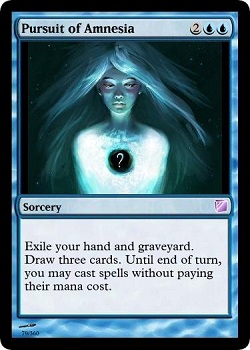
Well If Ya Want Power, It’s What We’ll Give Ya
The biggest difference between a regular Limited environment and a Cube environment is the number of unique effects, which is way higher in cubes. This is what causes Cube gameplay to mimic Constructed more than Limited, and the CCP isn’t different in that regard. The biggest difference in the CCP and a regular cube is that when we want a hole filled, like one more card advantage spell in white or another aggro dude in black, we didn’t have to cross our fingers and (im)patiently wait for our prayers to be answered.
Once we had the “master list” spreadsheet finished with all of the numbers crunched down to a science, we started filling in holes where we didn’t have effects that we wanted. As we filled in unique cards (which would be almost every card, unless it was a rift off of an old card that had some stat slightly different), we focused in on ones that could go deeper than what they were on the surface. Those cards turned into cards with brand new mechanics.
The new mechanics ultimately aren’t the bread and butter of the CCP, but they sure are the steak sauce. There are ten brand spanking new mechanics, with each mechanic spanning exactly three colors, no more and no less. We limited each mechanic to five cards each, with one mechanic having only three cards based on its swingy nature. This seems like a good time to show you a mechanic, so how about the tenth, previously unspoiled mechanic that is so swingy it gets fewer cards than the rest?
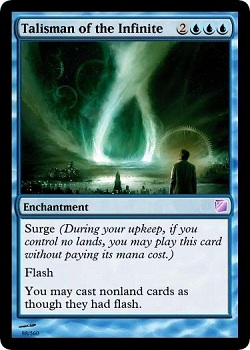
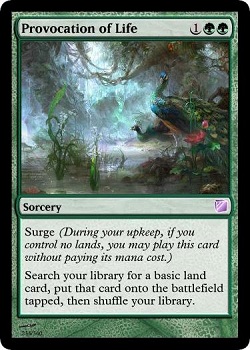
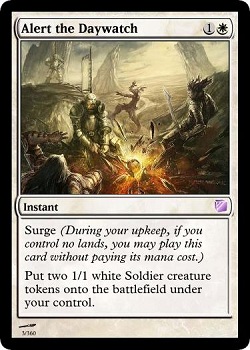
The new mechanics are always the toughest things to learn when a new set comes out, so learning ten new mechanics would be no small feat for some people right out of the gate. There is a reason Time Spiral Block isn’t the best received among casual players, and we were sympathetic to that. When playing this cube, you’re going to be learning a bonanza of cards anyway, so we have them spread widely so you see them enough to make an impression. Each mechanic’s placement into a color either enhances a strength or shores up a weakness. There are very few cards that feel out of place mechanically, and the ones that do are purely for function of necessity.
We haven’t forgotten about old mechanics either, except for one: kicker. Kicker is the most diabolical, thunder-stealing mechanic ever created; it’s really just 80% of all mechanics ever made, and you won’t be seeing his groveling, snotty little face around the CCP. This article by Mark Rosewater sums up how I feel about kicker pretty well.
Once the mechanics were finished being designed, we continued filling holes, usually starting with mana cost or effect. “We need a creature that cost 1RR,” or “How can we make this enchantment cost either three or four?” and the like were everyday questions for two straight months. Of course, in addition to those things, we had to flesh out identities for colors and color combinations. Here are some ideas we set out to make before testing:
- White is very cohesive with both artifacts and enchantments. It has excellent mass creature control and can swarm with tokens or small creatures.
- Black is very good at reanimating things, as well as attacking with small creatures. It has efficient, aggressive discard.
- Blue is purely controlling, with very good and abundant card filtering, some bounce, and moderate counterspells. It has trouble standing on its own, unless it assembles a combination of particular cards.
- Red has excellent burn with moderately quick creatures. Focus is on reducing the life total of your opponent from 20 to zero as quickly as possible when playing with this color at all.
- Green is the only place you can get mana fixing outside of naturally drafting lands. It ramps well and has the best ways to use its time and mana. Green is much more often a main color rather than support color. Has some aggressive elements.
This let us fill in the rest of our holes, altering and cutting some cards to fit new ones even before testing began. It wasn’t but eight weeks later and we were ready to take it on the road.
A Little Bit of Sleeves Mixed With Some Card Stickers
So once we had our first 360-card cube list, we set out to make some proxies and play with this thing! Our first test run was at StarCityGames.com Open Series: Charlotte featuring the Invitational last December, and boy were we excited. We had tons of our friends excited to try the cube out, and we hadn’t even played with it ourselves! We were sure that we’d done a great job putting this super fun product in the hands of our “testers” and just wanted to sit back and watch them play. The result?
Complete and utter disaster.
But that is a story for another day.
Thanks for stopping in today for this out-of-the-ordinary article; I’ll be doing exactly one more on this topic, as will Ali sometime in the very near future. You can check out the Facebook page for the CCP in the link under my name just a bit down, and I encourage you to do so if you haven’t already. Join the discussion there about how crazy/stupid/awesome what we’re doing is! We’ve also done some video work with Michael Mirrielees over at Seems Good Radio TV, so those are worth a watch as well. As always, but especially this week, hit the comments if you have any questions (and I’m sure you will!)
Before we go, let’s jump back to reality with a real cube and a deck that I drafted in an eight-man Rotisserie during GP Atlanta.
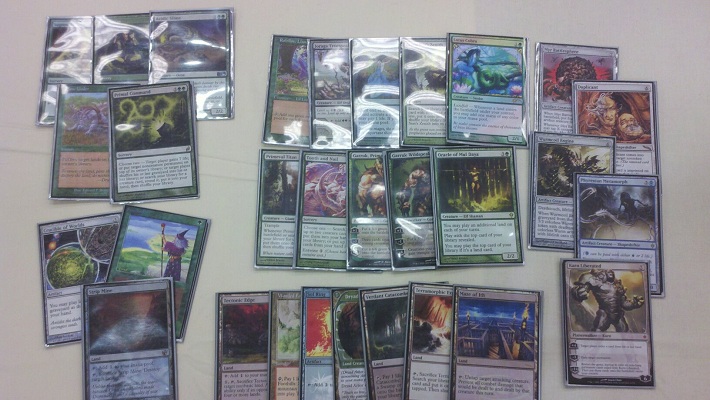
All the Forests!
@JParnell1Â on Twitter
Official Facebook Cube Drafting Page
My and Ali Aintrazi Custom Cube Project Facebook Page
